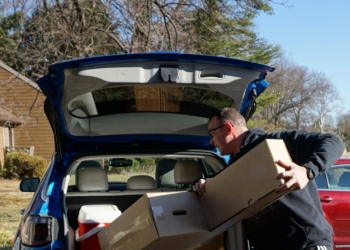Every summer, students lose some of the skills and information they gained over the school year. In some cases, this can mean up to two months of learning. Teachers refer to this regression as the summer slide. This can be particularly problematic for military students transitioning to new schools because of a PCS move or a deployment.
A new book called “Seasons of My Military Student: Practical Ideas for Parents and Teachers” addresses the challenge of military students changing schools. Authors Stacy Huisman and Amanda Trimillos are military spouses, parents, and educators who want parents and teachers to advocate for each military student. The book was just released in June and is available for purchase from Military Family Books.
I interviewed the authors to learn more about the book and their strategies for helping military students during the summer months. Stacy said she and Amanda are friends who wrote the book as a collaborative effort. “Elva Resa (publishing) gave us this amazing opportunity to combine my passion for education advocacy and Amanda’s passion for teacher leadership into what we feel is a book written just for military families, classroom teachers, and school support staff.”
What challenges do military students face in the summer?
While all students struggle to maintain math and reading skills during the summer, military students face additional challenges. Even when military kids aren’t going through a move, they still experience social changes from friends moving, visits away with family, or a change of schedule from deployments. These social challenges can affect their learning, even when a child isn’t going through a move.
When a military kid does change schools, they often experience a “gap and overlap” in material.
Amanda explains, “Some content and learning might overlap, so the child will study the same material twice. Other content might leave a gap in learning – a student has yet to be introduced to multiplying fractions at one school to find the next school expects them to be able to multiply and divide fractions with ease.”
When military kids change schools, Stacy says that “The summer slide becomes more of summer tumble. We stress in our book that military families need to plan ahead before a move to find out what the next school’s curriculum and standards will be. If a student’s current school uses Common Core, but the next school doesn’t, it’s best to prepare a little over the summer for academic speed bumps.”
How can parents prevent the ‘summer slide’ for military kids?
Both authors encourage parents to be proactive and keep kids learning all summer long. One example is to use math skills in everyday life — when you are cooking, at the grocery store, or on a long car trip. Plan theme weeks to let your children explore different science, history, or geography topics. Visit museums. Attend a summer camp. Join a robotics or STEM club. And of course, encourage summer reading with trips to the library. If you won’t be around a local library long enough, use the Blue Star Families Summer Reading program. Amanda says reading just 4-6 books can “prevent a decline in reading achievement scores from the spring to the fall.” Even during a move, kids can continue to use educational workbooks and apps to stay on track.
How can parents help military kids transition between schools?
In the book Stacy and Amanda discuss the “seasons of transition”— Leaving, Arriving, Growing, and Thriving. They emphasize the need for parents to be prepared for each season. One of the best ways to do this is by making an education binder for each child. This contains work samples, report cards, test scores, and notes from their teacher. Parents can also collect a list of curricula from the previous school. The binder becomes the “unofficial transcript” for their new school.
Amanda emphasizes the importance of an ‘exit interview’ with the previous teacher to discuss the student’s strengths and weaknesses, plus areas of concern. Even if the teacher doesn’t know the curriculum at a new school, they can help build a PCS work pack tailored to the student’s needs, to help them stay on track during a move.
Whether or not your child is changing schools, the summer can be used to prepare for the next school year. When parents, teachers, and students work together, they maximize the student’s learning experience and help them avoid falling behind from the summer slide.
Read comments






































